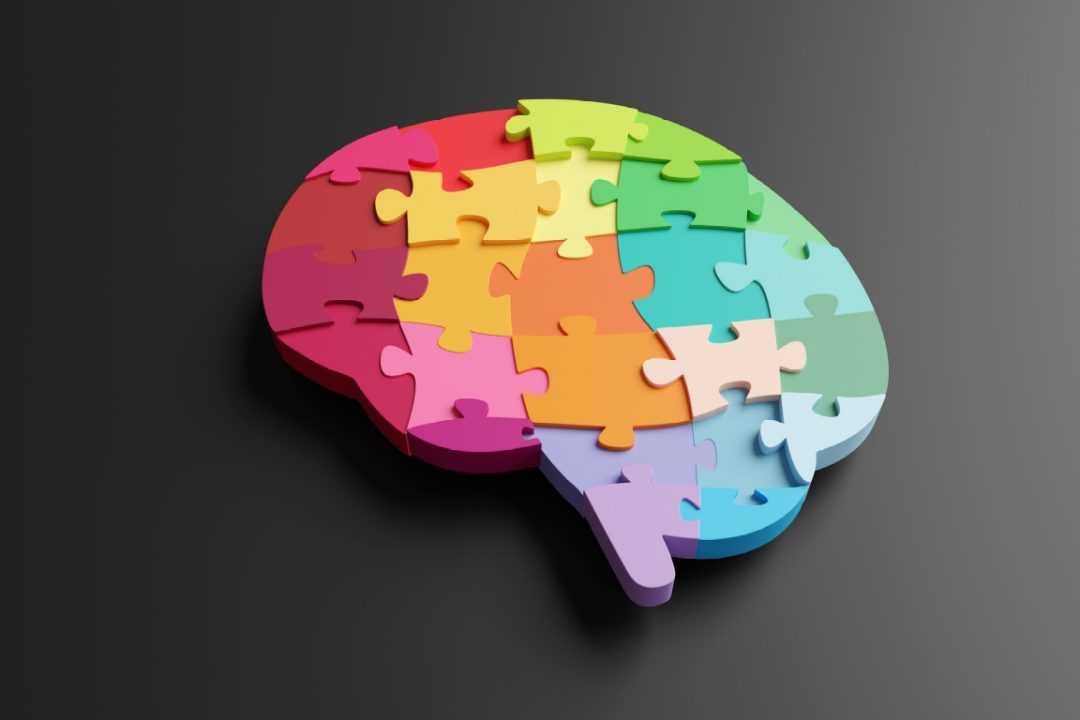
Common sense is “that forgotten branch of psychology,” observed philosopher G.K. Chesterton in the early 1900s. One could wonder what he’d say today, with “psychology” — which means “study of the soul” — being both soulless and ubiquitous.
And it being so widespread is a reason, it’s said, that autism diagnoses are so common today. We’re more “aware” of the problem and “the screening is better” is the idea. But then there are other theories. Some have implicated vaccines in autism manifestation, while others have cited fluoride as a possible cause. For his part, HHS secretary Robert F. Kennedy, Jr. has vowed to investigate the matter and says that by “September, we will know what has caused the autism epidemic.”
But will we? What if the cause is cultural as much as, or more than, environmental (or genetic)? What if, as one writer put it Sunday, “society is the problem”?
Hard Truth About a Soft Science
It’s no wonder this is a major topic: The U.S. autism-diagnosis rate has increased 6,800 percent over the last 30 years. The rise over the past six decades has been a whopping 69,000 percent. Of course, a major part of this is that today’s autism is not, well, your grandfather’s autism. More on that momentarily. But first some perspective and history are in order.
Late “Helter Skelter” mass murderer Charles Manson once reportedly said in a prison interview, “You know, a long time ago being crazy meant something. Nowadays everybody’s crazy.” (No, I’m not implying that those with “autism” and every other “disorder” are “crazy.”) Taking his statement loosely, he had a point. As psychiatrist Dr. Ralph Lewis noted in 2022, “everyone seems to have ADHD these days.” Doctors Health Press went even further in 2013, writing:
If the Diagnostic and Statistical Manual of Mental Disorders (DSM) had its way, we would all be suffering from some form of mental illness.
For sure, when all you have is a psychological hammer, everything looks like a mentally ill nail. The proof is in the pudding, too, as people with certain “disorders” have burgeoned like the national debt. In the last 60 years, psychological diagnoses in America have supposedly increased 150 percent. (All figures are according to Grok-AI internet searches unless otherwise indicated). That doesn’t sound too bad, perhaps, though I suspect the actual figure is higher. But now consider the increase in the United States in a few specific “disorders/conditions” over the past 30 years:
- Attention-Deficit/Hyperactivity Disorder — 500-800 percent.
- “Gender” dysphoria (GD) — approximately 14,900 percent.
- Autism Spectrum Disorder — 6,800 percent, from about 1 in 2,500 in the early 1990s to 1 in 36 by 2020.
Disorder-creation Disorder?
GD, which really should be called Sexual Identity Disorder (SID — believing you’re in the “wrong” sex’s body), is especially telling. It’s now well established that most kids and adults thus diagnosed today don’t actually have SID. Much of the phenomenon is explained by “social contagion.” And many of the men “identifying” as women have autogynephilia (when males derive sexual excitement from masquerading as female). Moreover, a whistleblower revealed in 2023 that a high percentage of the SID-diagnosed youths at her “gender” clinic actually had other problems — such as “autism.”
This would, mind you, not at all surprise SID sufferer Alan Finch (who went so far as having mutilative surgery). He did say, after all, upon recognizing his error, that “transsexualism was invented by psychiatrists.”
Most inventive they are, too. Just consider that the following “disorders” are or have been in the DSM:
- Oppositional Defiant Disorder
- Internet Gaming Disorder
- Caffeine Withdrawal
- Disruptive Mood Dysregulation Disorder (bad behavior in children)
- Mathematics Disorder
- Hoarding Disorder
Is any of this surprising? Cookie manufacturers want everyone eating cookies. Tennis racquet manufacturers want as many people as possible playing tennis. Likewise, the mental-health establishment also instinctively tries to widen its market — and hence its earning potential. And this happens every time something formerly called a sin or eccentricity is labeled a “disorder.”
So, returning to autism diagnoses, we must ask: Is this market imperative having an influence? And should we not question a psychiatric establishment that itself has Disorder-creation Disorder? Remember something, too, when assessing credibility. This is an establishment that has insisted boys can morph into girls — and that has mutilated kids on this basis.
Is It All Really “Autism”?
One person questioning the autism narrative is the aforementioned writer, commentator Andrea Widburg. Adding perspective, she points out that in the last decade, the adult (ages 26-34) autism diagnosis rate increased 450 percent. She mentions, too, that she knows and edited a book for someone who has what autism was always understood to be until fairly recently.
Author Ido Kedar, Widburg writes, is “non-verbal, has limited impulse control, and struggles badly with the various stimuli around him…. People like Ido are very rare. In my many years, I’ve only known one other person with true non-verbal autism.”
I can second this. As a child in the 1970s, I saw someone with autism once or twice, and you couldn’t miss it. Oh, we didn’t understand these individuals’ inner world the way we can today (Kedar’s book provides such insight). But they clearly had a very serious issue.
That was then. Today there’s that autism “spectrum,” which includes children not even remotely like Kedar. As Widburg writes of the diagnosis:
The manifestations no longer require the full disconnect from the world that Ido and the few others like him display. Instead, autism can now be diagnosed based upon things such as avoiding eye contact, being anti-social or not responding to social cues, being OCD with toys and objects, having obsessive interests, being hyperactive, having constipation, being very anxious, etc.
(More serious signs also may present, depending on the case.)
Widburg states that she knew many kids exhibiting the above peculiarities. “We called those kids geeks, nerds, and, eventually,” she writes, “dot.com billionaires who were geeky and nerdy.” They didn’t have a “disorder,” but “were just part of the vast bell curve of humanity.”
And do they really have an inborn “disorder” today? Or is something else at work?
Cultural Causes?
Widburg theorizes about socialization-oriented causes of the “autism” phenomenon. First, she writes about screen time’s effects:
If your social life is texting (as is true for so many) and your activities are computer games (which is especially true for young men who spent hours in darkened rooms frantically flicking their thumbs while talking to disembodied voices) … well, yeah, you won’t understand eye contact, you won’t pick up on social cues, you’ll lack empathy, and you’ll probably have high anxiety in most social situations. This could describe many of the people in the age 24-36 cohort who have been diagnosed with autism spectrum issues.
In other words … our young people have become de-socialized.
Frankly, I’ve had the same insight. What kind of body language, for example, do you have to exhibit when communicating via screen? (It’s emoji time.)
When evaluating this, consider that children’s brains possess great neuroplasticity and can actually change based on environmental stimuli. This is no surprise. Science has learned, after all, that environment can influence even gene expression.
Extreme examples of environment’s effects are seen in the rare cases of feral/severely neglected children. It appears, for instance, that kids who don’t learn language during a critical developmental period may never be able to become fully functional in it. A denial of human contact leaves them forever stunted. This raises a question, too.
Does it not logically follow that a reduction in human contact might have a similar effect to a reduced degree?
For certain is that it’s not normal for kids to be raised on screens. Historically, children spent time interacting with other humans, not devices.
The Covid Tragedy
Widburg also mentions, as an exacerbating factor, the Covid lockdowns, which kept kids isolated and masked and not socializing. Relevant here, too, is the story of CNN medical analyst Dr. Leana Wen. Wen was a strong proponent of masking children to protect them from the coronavirus.
That is, until the practice harmed her own little son’s “language development.” Then she changed her tune.
(Note: If Wen had read and minded The New American, she’d never have hurt her boy. We warned of the phenomenon that would befall her child early on.)
So what can be said about the autism phenomenon? Well, we know regarding the “trans” situation that youths with disparate issues (e.g., autogynephilia) are lumped in with the rare Sexual Identity Disorder sufferers. Likewise, probability dictates that the “autism” category also includes people with disparate problems. A small percentage certainly have biologically determined issues, and maybe some have environmentally induced ones. What are the odds, though, that none at all are plagued by a socially created cross?
Betting against that means listening to the people who not only may say your anti-social son has autism, but that he also can become a girl if he feels like it.
And the good news for the mental-health profession is that, either way or both ways, it will make money.




